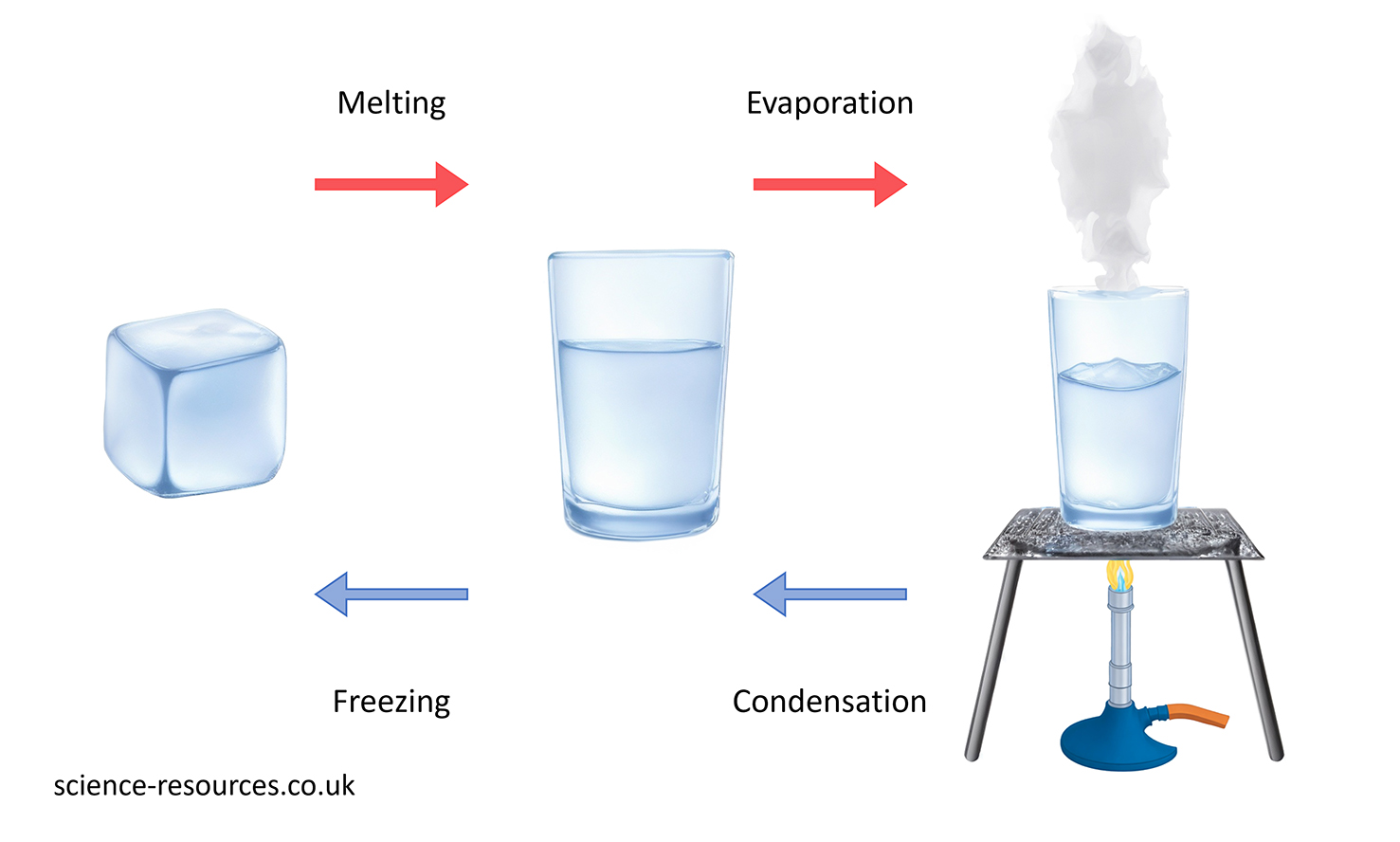Changes of state
Change of state
Solids, liquids and gases are different states of matter that many substances can be in.
The state of a substance can be changed by heating it up or cooling it down. There are four main ways that a substance can change its state:
How water changes state There are four main changes of state: melting, freezing, evaporating and condensing Sublimation Conservation of mass
This diagram shows the process of water changing state.
Some substances can change directly from solid to gas, or from gas to solid, without going through the liquid stage. This is called sublimation. Solid carbon dioxide ('dry ice') and iodine can sublime.
Mass does not change when a substance changes state. Only how the particles are arranged, how close they are, and how they move change. This is called the conservation of mass.
For example, 20 g of water boils to form 20 g of steam or freezes to form 20 g of ice. There is change of state, but no change of mass.
Summary: